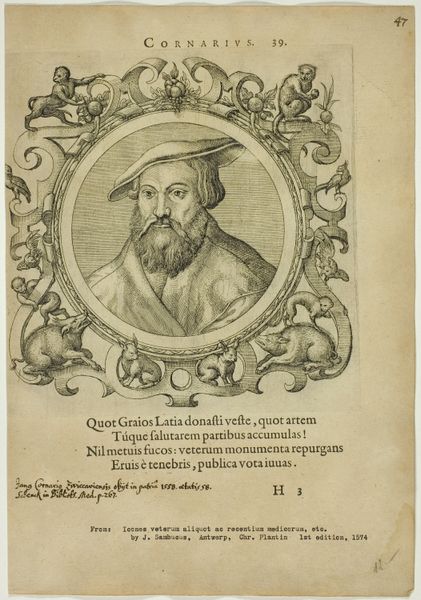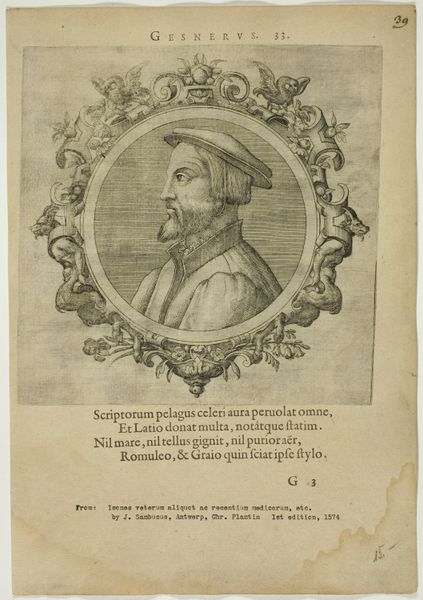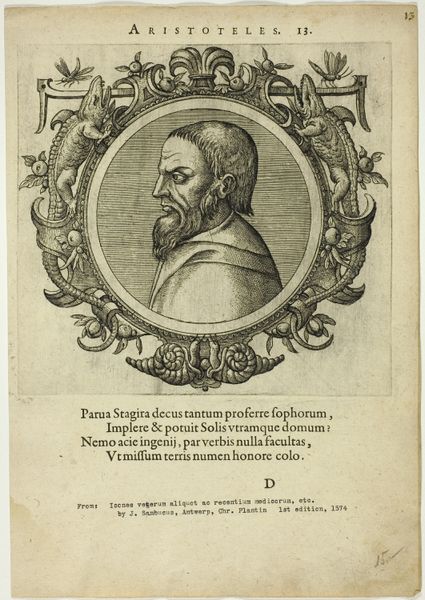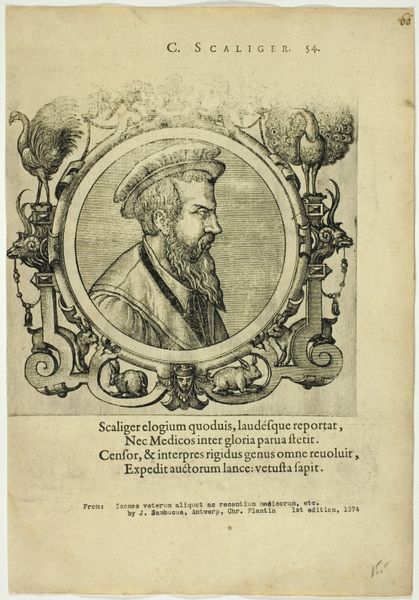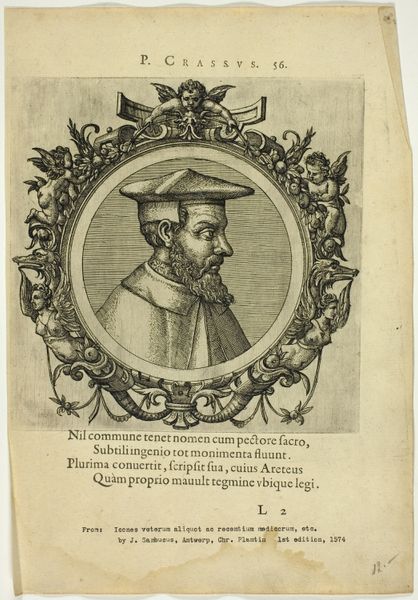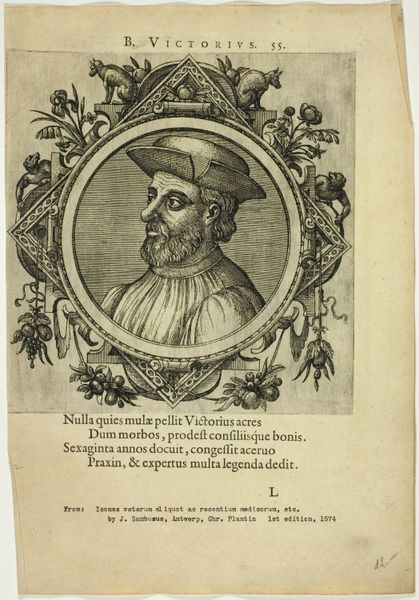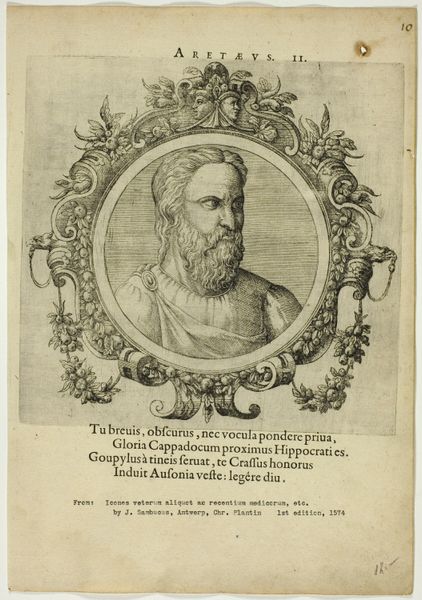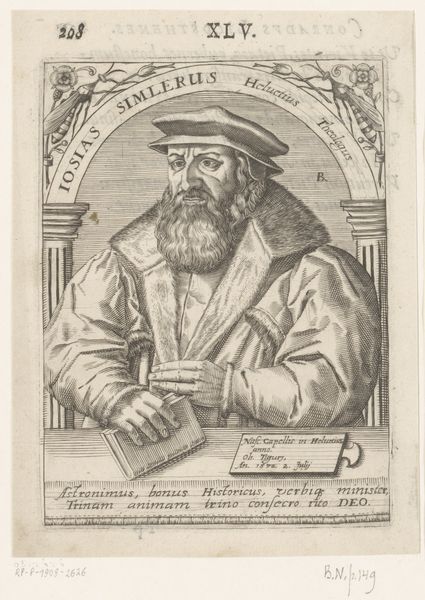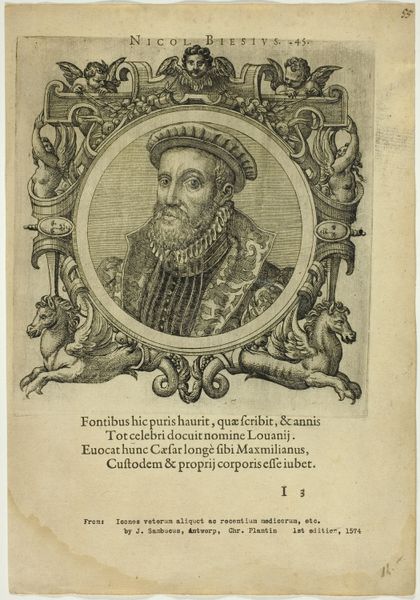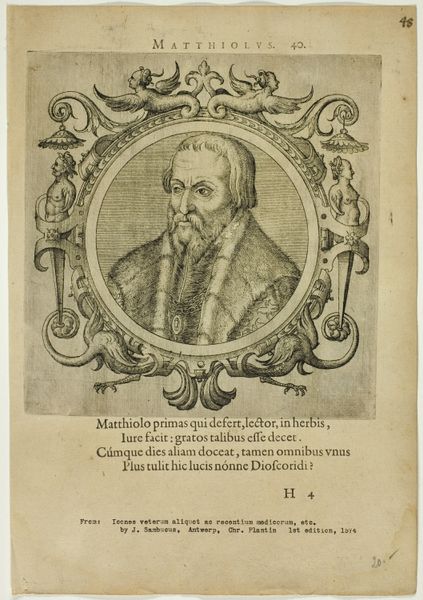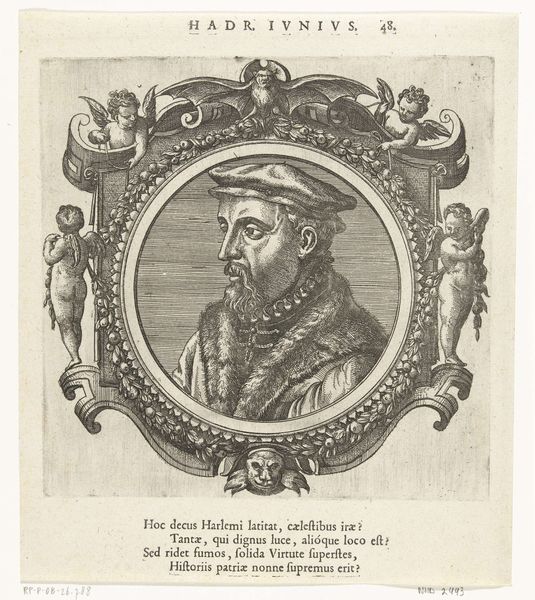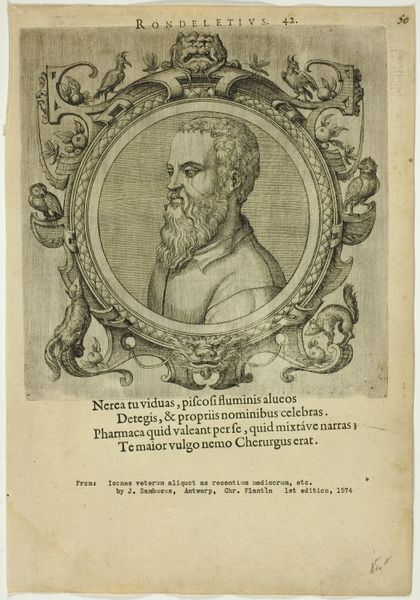
drawing, print, etching, paper
#
portrait
#
drawing
# print
#
etching
#
paper
#
11_renaissance
#
northern-renaissance
Dimensions: 195 × 179 mm (image/plate); 311 × 216 mm (sheet)
Copyright: Public Domain
Curator: Here we have "Portrait of Fuxius," an etching on paper, likely from 1574, created by Johannes Sambucus. What strikes you immediately about it? Editor: The density of the detail. It feels contained, almost claustrophobic, even within that decorative frame. A stark contrast, I suppose, between the inner circle, and what seems to exist outside the realm of his immediate influence. What can we know about the sitter here? Curator: The image comes from a collection of portraits of physicians. What’s really fascinating is placing this image within the history of medicine and the evolving social standing of doctors during the Renaissance. The elaborate frame almost serves as a symbol of their elevated status, doesn't it? The fruits, the animal heads; they lend a certain importance. Editor: Yes, there is certainly power signified here, I read that visual language more cynically though, as reinforcing existing power structures and hierarchies. Is it possible to decode his status as a kind of 'learned' elite, especially considering medicine was a particularly patriarchal field? And, even more pointedly, in contrast with other knowledge systems, specifically plant knowledges largely held and cultivated by women. Curator: That is definitely a pertinent point. Looking closer at the text beneath the portrait, with its Latin verses about his dedication to medicine and knowledge of herbs – the text solidifies the link between classical learning, herbal remedies, and burgeoning scientific thought. However, that framework around his face has such curious detail. Editor: Those small touches are precisely where challenges to centralized narratives may also emerge, if one closely considers who had a voice. It suggests both status and a subtle tension, a kind of anxiety about consolidating knowledge within a specific social group, at the exclusion of the feminine and feminine knowledge in that moment. It feels less celebratory, and more a marker of the times: an etching of the Renaissance medical elite and the era’s social stratification, so rigidly bound. Curator: A lot to consider in just a small print then! Thank you for that insightful perspective on "Portrait of Fuxius.” Editor: My pleasure. This was an interesting encounter to interpret Renaissance ideals around gender, art and representation.
Comments
No comments
Be the first to comment and join the conversation on the ultimate creative platform.
